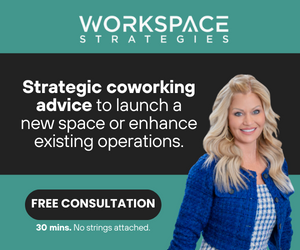- All companies should have a business continuity plan in place to protect themselves from unforeseen challenges.
- Risk assessment and management is key to any strong disaster mitigation strategy.
- Migration strategies and employee wellness are important considerations during contingency planning and disaster recovery.
The COVID-19 pandemic, as well as other disruptive events like the fires that devastated the Hawaiian island of Maui, should serve as a stark reminder to everyone in the workforce that they should be prepared to face unforeseen challenges.
Data published in the PwC Global Crisis and Resilience Survey 2023 reveals that 91% of companies have experienced at least one event, other than the pandemic, that has “disrupted their business in the last two years.” The potential damage that these disruptive events can inflict on an organization should inspire proactive planning — including everything from updating insurance policies to preparing a migration strategy and shoring up cyber security.
A number of these disruptions occur as natural phenomena and are often referred to as “Acts of God” in the legal field. Defined in Black’s Law Dictionary, the most widely referenced legal dictionary in the U.S., an Act of God refers to “an overwhelming, unpreventable event caused exclusively by forces of nature, such as an earth-quake, flood, or tornado.” The term encompasses natural events that are so unexpected that no human foresight or skill could reasonably be expected to anticipate it.
Although legal definitions are typically only referred to in contract disputes or insurance claims, reading them raises a good question: How does an organization successfully protect itself from outside interferences that are beyond its control?
Natural disasters such as floods, earthquakes and fires are extreme examples of disruptive forces that could negatively impact a business. However, a brief risk management exercise examining the potential risks that an organization could face when encountering these kinds of disruptions, could help teams when developing mitigation strategies on how to move forward — both financially and organizationally.
Risk Management
According to Disasterrecovery.org, “organizations come under the influence of a large number of internal and external factors that can negatively impact the outcome of their operations. Risk management deals with managing these internal and external factors that impede businesses from carrying out their activities satisfactorily.”Identifying these risks can be done by taking notes on a business’s internal and external environment, including its:
- operations
- finances
- employees
- customers
- and competitors
A variety of tools and techniques have been established to assess risks, including SWOT analysis, risk matrices, and financial modeling.
“After the risks have been identified, they must be prioritized in accordance with an assessment of their probability,” according to Investopedia.
In other words, risks should be examined based on their likelihood and potential impact on a business. This allows organizations to focus on the most pressing threats.
Identifying risk is just the first major step. Then, there’s the actual possibility of natural disasters happening like a widespread fire. According to Bankrate, “between 2022 and 2023, wildfires accounted for over $3.2 billion in damages across the United States.”
If your organization identified wildfires as a looming threat, then preparing a migration plan should probably move to the top of the to-do list. The same could be said of areas that are vulnerable to hurricanes.
What is a Migration Plan?
A migration plan, often part of a larger contingency plan, is essentially a blueprint designed to guide a business from one environment to another. This could involve anything from moving offices to another location, transferring data to a new server or transitioning from one business model to a new one.
Having a detailed migration plan ready can help the company move through these changes smoothly, and could ease the minds of employees during a stressful time. And, that brings up the important decision one has to make: Will the migration plan include a permanent or temporary relocation? This will likely depend on the circumstances and the type of unexpected event that is encountered.
Examples of events that required permanent business relocation are the war in Ukraine, or when a fire, tornado or hurricane decimates an office or business center. In cases where there is a health hazard, or similar dangerous outcomes to an environment, you may also decide that your business is permanently moving locations.
A comprehensive migration plan should consider these aspects and it also should emphasize business continuity in order to protect company assets, ensure insurance coverage, and even promote employee well-being.
Business Continuity Planning
The U.S. Federal Emergency Management Agency (FEMA) states that approximately 40% of small businesses do not reopen after a disaster, according to On Point Wealth Partners.
Business continuity planning (BCP) is the process a company undergoes to create a prevention and recovery system from potential threats to the company. The plan ensures that employees and assets are protected and can function quickly in the wake of a disaster. While a migration plan seems similar to a business continuity plan, they are more akin to two sides of the same coin.
On one face, you are planning to ensure that an organization can continue to operate in the event of a disruption (a continuity plan), and on the other face, you are designing a plan to move an organization to a new area or adopt new infrastructure or new business model (migration plan).
A BCP provides a roadmap for recovering from potential threats and getting back to business as usual as quickly as possible. It focuses on restoring operations, minimizing losses, and maintaining communication with stakeholders.
The Need for Business Continuity Plans
While the goal when disaster planning is that you hopefully never have to use it, the reality isn’t so optimistic. According to Preparis’ Business Continuity Checklist, “52% of businesses experienced a disruptive event(s) in the last five years.”
Natural disasters are not the only things that put a business at risk. Other potential incidents to consider include: supply chain failure, utilities outage, and cyber incidents, warns The Business Continuity Institute.
A strong BCP covers all aspects of a business including communication channels, business processes, human resources, and IT recovery — all parts should be centered around mitigating risk and boosting productivity.
Effective asset management is also a crucial element of business resilience. Asset protection, both physical (like equipment) and intellectual (such as creative intellectual property), should be a fundamental component of any migration plan. Businesses should have a clear inventory of their assets, know their value, and protect them through appropriate measures — whether that’s through the means of insurance or other strategies outlined in their plans.
Insurance: An Essential Shield
Benjamin Franklin is often quoted as saying, “In this world nothing is certain but death and taxes.” However, if he lived today, he probably would have included insurance on that list. Insurance is an integral part of a business’s continuity and migration plan. It serves as a financial backup to mitigate losses caused by unforeseen circumstances, thereby protecting the company’s bottom line. The Association of British Insurers explains, “insurance is a financial product sold by insurance companies to safeguard you and/or your property property against the risk of loss, damage or theft (such as flooding, burglary, or an accident).”
Property insurance is one of the most important for a business or organization to have. Depending on the plan, it can cover damage or loss of the company’s physical assets such as buildings, equipment, and vehicles. This damage or loss could be due to a wide range of causes such as the aforementioned fire and natural disasters, but also by crimes like theft.
There’s a very wide spectrum of insurance policies that a company should consider and discuss with an insurance agency, including:
- Liability Insurance
- Workers’ Compensation Insurance
- Product Liability Insurance
- Professional Liability Insurance
- Business Interruption Insurance
- Cyber Liability Insurance
- Key Person Insurance
- Commercial Auto Insurance
- Data Breach Insurance
Choosing the right types of insurance for a business largely depends on the nature of the business and the risks it might face. It’s best to work with a knowledgeable insurance agent or broker to assess the business’s needs and get the most appropriate coverage. Businesses also need to regularly review and update their insurance policies to ensure they remain suitable as the business evolves and new risks emerge.
Employee Well-being: A Paramount Priority
Lastly, but perhaps most importantly, any contingency plan must prioritize the well-being of employees. A thorough migration plan should include measures such as flexible work arrangements, employee assistance programs, and clear communication during times of crisis. This not only provides employees with reassurance and stability, but it also protects the business by ensuring continuity of knowledge and skills.
As we navigate this increasingly unpredictable climate and business landscape, the creation of a comprehensive contingency plan becomes not only a safeguarding strategy but a competitive necessity. By incorporating aspects of business continuity planning, appropriate insurance coverage, asset protection, and employee well-being measures, businesses can better prepare themselves for unforeseen situations and ensure their survival and success in the long run.

 Dr. Gleb Tsipursky – The Office Whisperer
Dr. Gleb Tsipursky – The Office Whisperer Cat Johnson – Coworking Marketing Maven
Cat Johnson – Coworking Marketing Maven Angela Howard – Culture Expert
Angela Howard – Culture Expert Drew Jones – Design & Innovation
Drew Jones – Design & Innovation Andrea Pirrotti-Dranchak – Competitive Advantage
Andrea Pirrotti-Dranchak – Competitive Advantage Jonathan Price – CRE & Flex Expert
Jonathan Price – CRE & Flex Expert Jeremy Fennema – Tech Innovation Alchemist
Jeremy Fennema – Tech Innovation Alchemist







